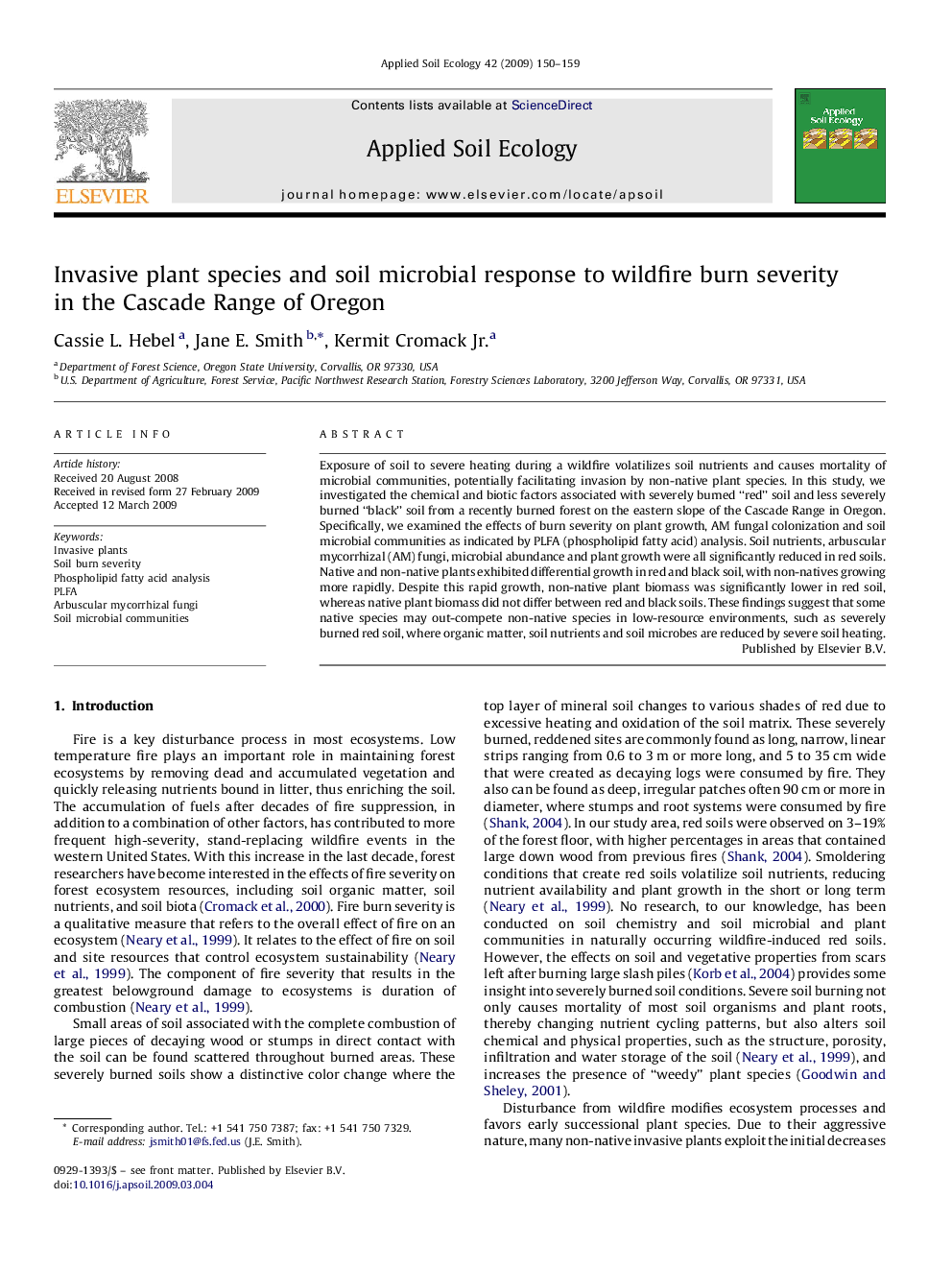| Article ID | Journal | Published Year | Pages | File Type |
|---|---|---|---|---|
| 4383008 | Applied Soil Ecology | 2009 | 10 Pages |
Exposure of soil to severe heating during a wildfire volatilizes soil nutrients and causes mortality of microbial communities, potentially facilitating invasion by non-native plant species. In this study, we investigated the chemical and biotic factors associated with severely burned “red” soil and less severely burned “black” soil from a recently burned forest on the eastern slope of the Cascade Range in Oregon. Specifically, we examined the effects of burn severity on plant growth, AM fungal colonization and soil microbial communities as indicated by PLFA (phospholipid fatty acid) analysis. Soil nutrients, arbuscular mycorrhizal (AM) fungi, microbial abundance and plant growth were all significantly reduced in red soils. Native and non-native plants exhibited differential growth in red and black soil, with non-natives growing more rapidly. Despite this rapid growth, non-native plant biomass was significantly lower in red soil, whereas native plant biomass did not differ between red and black soils. These findings suggest that some native species may out-compete non-native species in low-resource environments, such as severely burned red soil, where organic matter, soil nutrients and soil microbes are reduced by severe soil heating.
